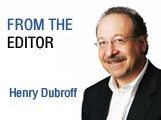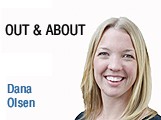Ford infusion a new model for banking
 Two years ago, a pair of Texas investors stepped into a board meeting in Santa Barbara and met the leadership of Pacific Capital Bancorp for the first time.
Two years ago, a pair of Texas investors stepped into a board meeting in Santa Barbara and met the leadership of Pacific Capital Bancorp for the first time.
The vision that Gerald Ford and Carl Webb brought to the table was very different than anything that had been tried in the banking industry. In early November 2009, they proposed a $500 million investment that would mean a near-total recapitalization of an existing bank. And it would take place outside of a government-subsidized takeover by the Federal Deposit Insurance Corp.
For the parent company of Santa Barbara Bank & Trust, it was a do-or-die situation — without new capital the bank was not likely to survive.
But for the Ford Financial Fund there were plenty of risks as well. Roughly two years to the day after that first meeting, I sat down with Webb, who became CEO of the region’s largest banking company after the recapitalization.
The biggest risk, Webb said, was taking the entirety of Ford Financial’s $500 million investment pool and putting it into a single market. “Out the window went diversity,” he said.
Two years later, it looks like the bold bet will pay off. Since the investment closed in August, 2010, Pacific Capital has returned to profitability, earning $84 million, and the loan portfolio is performing better than expected.
Webb, who remains CEO, said he’s optimistic the bank can get out from under a regulatory order that, among other things, prevents it from paying dividends. And there have been signals that the U.S. Treasury, which still owns about 3.6 million shares of Pacific Capital common stock, is looking for a way to exit.
Webb, who partnered with Ford to build Cal Fed, a bank that was sold to Citigroup for a tidy profit, said a new fund based on the Pacific Capital model is in the works.
“We want to take the blueprint and do other bank mergers,” he said, adding that he and Ford hope to raise between $500 million and $1 billion. The idea, he said, is to “take the Pacific Capital architecture and provide it to non-FDIC assisted transactions.”
Webb said that opportunities likely exist among the more than 450 banking companies out of 707 that took so-called TARP money from the U.S. Treasury and still haven’t paid it back.
When it comes to operating Pacific Capital, Webb and the team he assembled have championed a back-to-basics strategy. “We are community minded and community focused,” said Webb, who early on recognized that Santa Barbara Bank & Trust was the institution’s strongest brand — now its only brand name from just south of the Bay Area to northern Los Angeles.
He said the bank has benefited from the resilience of the area economy and also leadership skills that emerged from employee ranks. “People who have been tempered by tough times are stronger performers,” he said.
The bank’s legacy loan portfolio has been performing “better than envisioned,” he said, with some loans being sold and others returning to performing status as the economy stabilized. At Sept. 30 the company had total assets of $5.9 billion.
The new Pacific Capital team is strong on credit standards and has learned a key Webb lesson: “Don’t stretch for performance.”
Echoing a view endorsed by Financial Times Columnist Martin Wolf on Nov. 11, Webb said he believed the banking industry is a “10 percent to 15 percent return on equity business with well-defined guardrails.” If you go off the rails, he added, an economic downturn can be a punishing experience.
The only way to achieve returns at or greater than 15 percent return on equity is substantial leverage, and that doesn’t provide enough capital cushion in bad times. With the economy still hobbled by weak employment and with housing markets expected to remain weak “for years to come,” Webb said he’s comfortable operating with excess capital and plenty of liquidity.
A chunk of that capital will be deployed in a roughly $40 million investment to upgrade the bank’s computer systems, an endeavor expected in the second quarter of 2012.
Webb said he was aware that over the summer, the U.S. Treasury was in early discussions about how to exit its shares but was not aware of any specific timing. When it comes to regulatory oversight, he said the bank is completing its latest exam by the Office of the Comptroller of the Currency and is looking for a favorable result.
Over the longer term, Webb said that Pacific Capital would grow internally and via acquisitions. He said that the cost-reduction opportunities from mergers are lessons he learned at Cal Fed, which bought five banking companies between 1994 and 2003. “We have very keen eyes as to what makes sense for us. We watch banking in our footprint,” he said.
With a single brand, new systems, a seasoned team and a strong balance sheet, Pacific Capital Bancorp has gone from troubled bank to serious competitor.
• Contact Editor Henry Dubroff at [email protected].










